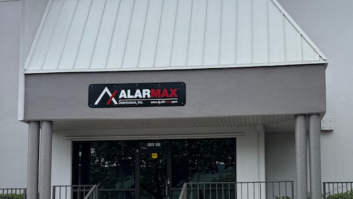As the world comes to grips with the new protocols of political correctness, those engaged in the business affairs of TV displays — and particularly those who write about them — are increasingly encountering the barbs and brambles of technological correctness.
The Plasma Display Coalition, started by four of the five leading manufacturers of plasma display panels, is back on the warpath in its ongoing mission to right the world’s misconceptions about the nature of their chosen technology.
This time the PDC has sponsored a survey of 1,200 plasma TV purchasers to assess what they like most about their plasma display screens, and predictably, picture quality ranked at the top of the list.
Apparently, one of the factoids that really galls plasma makers is the notion that plasma display panels (PDPs) are inferior in picture performance to similarly sized LCD TVs. Plasma makers — and evidently many PDP purchasers — say they feel the opposite is true when viewed under the proper conditions, and the world needs to know it.
What has made their mission tougher is that most TV shoppers have to compare plasma TVs alongside LCD TVs on the shelves of brightly lit retail showroom floors, which tend to make LCDs look richer, while at the same time serving to wash out some of the contrast from plasma images. After all, it’s hard to tell a consumer to believe what they are told and not what they see.
Fortunately, the PDC says, the ambient light problem has been reduced significantly with recent advances in screen filtering technologies, and they want consumers to come back to the stores and have another look.
According to PDC president Jim Palumbo, “outstanding picture quality” was the reason cited most among surveyed plasma owners as a “key” to their purchase decision. This is an indication that not all consumers are drinking the LCD Kool-Aid (correction: Flavor-Aid, my apologies to the Kool-Aid police).
In fact, 98 percent of those surveyed rated plasma HDTV’s picture quality excellent or good, and 91 percent believe their plasma TV is providing a good value.
Second on the PDC’s survey list was screen size — presumably some of those PDP owners surveyed purchased their PDPs several years ago, when LCD TVs in larger screen sizes were harder to find and significantly more expensive.
Third on the list was “picture resolution,” which points back to “outstanding picture quality,” and fourth on the list was “life expectancy.”
This last item is a head-scratcher. Aren’t plasma TVs those panels that everyone has been told are prone to image burn-in (er, I mean, “uneven aging of phosphors?” — my apologies to the PDC police).
The PDC points out that several plasma makers are now rating their panels with a 100,000-hour life expectancy — that amounts to more years than I have fingers and toes in average household daily viewing conditions. Palumbo adds that plasma panels should last longer than those old analog CRTs you still have collecting dust in the basement, and longer still than TVs based on rear-projection CRT tubes.
The longevity thing has been a big thorn in the side of PDP makers for a while and was the source of another big stink last month when market research firm TFCInfo released the findings of a consumer study that found two-thirds of those surveyed would rather have an LCD than a plasma TV. Longevity was cited as a key consideration.
Concerning the increasingly hyped “green” factor — the PDC’s study showed that “today’s 50-inch plasma TV sets typically consume less than half the energy of the 50-inch plasma displays first sold 10 years ago.” But the study also found that only 51 percent of plasma owners listed energy consumption as a purchase consideration, and only 10 percent felt their TVs were a factor in their energy consumption.
That could be because “less than half of respondents closely analyzed their electric bills,” according to the PDC study.
Palumbo said the annual operating cost of a 50-inch plasma TV is as low as $65 and “a 50-inch plasma TV can cost less to operate for a year than filling the family car’s gas tank just one time.”
He points out that the average operating cost of a 50-inch plasma set is:
- 4 cents per hour (LCD is 3 cents);
- 25 cents per day, if on six hours a day;
- $8 a month, which the PDC points out is “cheaper than a movie ticket.”
To help spread the plasma Flavor-Aid this summer, the PDC will distribute through retailers and other venues thousands of brochures entitled “Plasma — Simply the Best Picture.” These are being printed by member companies — Panasonic, Pioneer, Hitachi and LG — and distributed by company sales trainers as part of an in-store training program to highlight plasma TV strengths.
Bottoms up.













